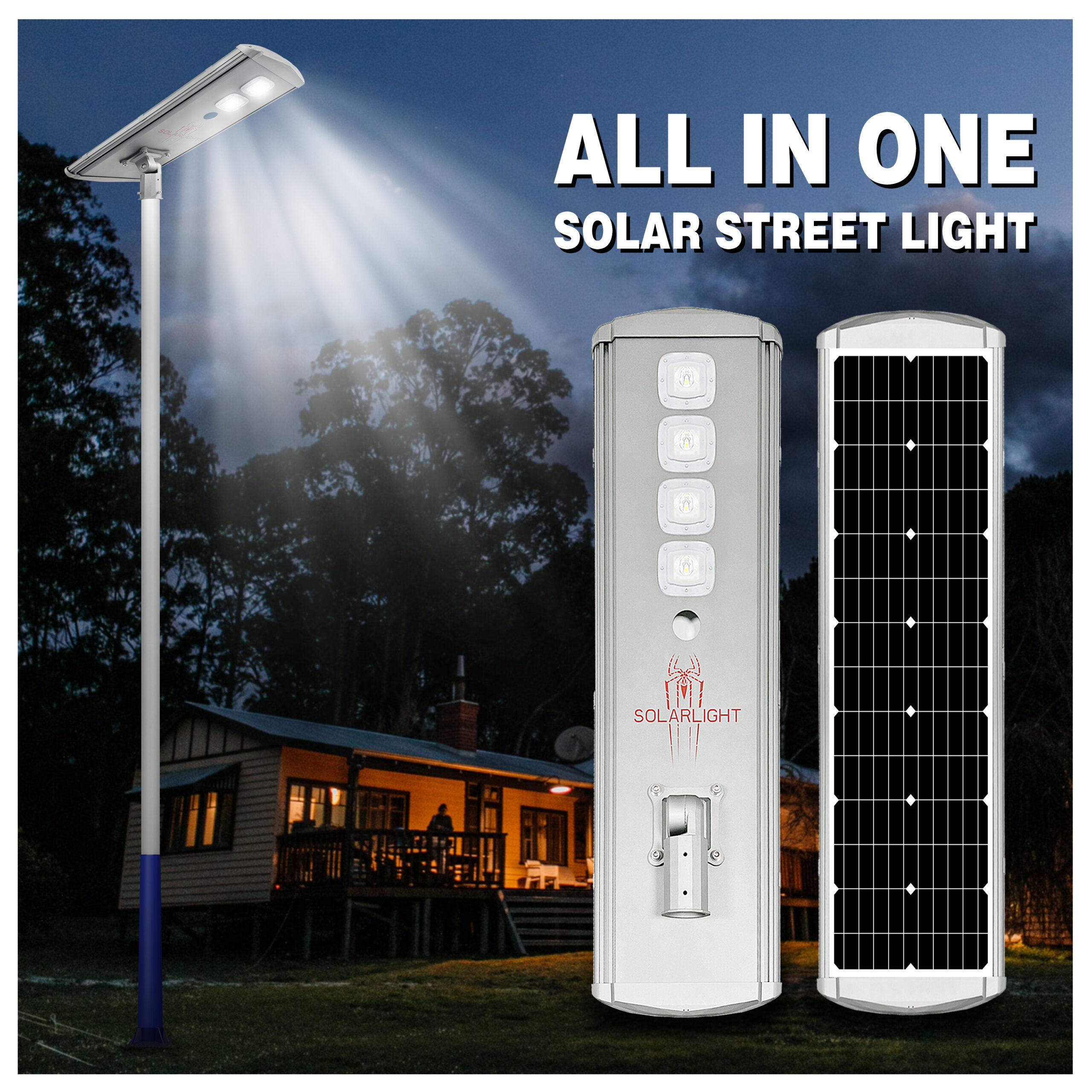Solar LED lights for gardens are an excellent way to illuminate your outdoor space while reducing energy consumption. The sun powers these lights, offering a sustainable and eco-friendly alternative to traditional electrical lights.With the increasing popularity of solar-powered garden lights, many homeowners are turning to this lighting solution for their gardens, driveways, patios, and walkways.
One key question that arises when considering solar LED lights for outdoor spaces is whether they can withstand different weather conditions. Outdoor lights face harsh elements such as rain, snow, wind, and extreme temperatures. So, it is essential to ensure that the solar lights are durable, weather-resistant, and can perform reliably in various environmental conditions.
This article will explore how solar LED lights for gardens can withstand different weather conditions. We will dive into the features that make these lights weatherproof, the materials used, and how to properly maintain them for long-lasting performance. By the end of this article, you’ll have a clear understanding of how solar LED lights can thrive in all kinds of weather.
1. What Makes Solar LED Lights Weather-Resistant?
The weather resistance of solar LED lights is primarily determined by their construction and the materials used in their design. To withstand harsh weather conditions, manufacturers create solar lights with specific features that protect them from elements like water, snow, wind, and extreme temperatures. These features are crucial for ensuring long-term durability.
Some of the key elements that make solar LED lights weather-resistant include:
-
Waterproof Housing: Most quality Solar LED Lights for Gardens are designed with waterproof or weatherproof housings. These enclosures are made from durable materials that prevent water from entering and damaging the internal components of the light. IP ratings (Ingress Protection ratings) are used to measure the level of protection against water and dust. Solar lights with a high IP rating (e.g., IP65 or IP67) provide excellent protection against rain and water immersion.
-
Corrosion-Resistant Materials: Solar lights often feature stainless steel or aluminum construction, which are naturally resistant to corrosion and rust. These materials ensure the lights continue to function even when exposed to moisture and humidity over extended periods.
-
UV-Resistant Coating: The solar panel is typically coated with a UV-resistant layer that protects the panel from sun damage and prevents it from losing efficiency under prolonged exposure to the sun. This feature is essential for ensuring the longevity and performance of solar lights in sunny climates.
-
Durable Solar Panel: The solar panels used in these lights are designed to be robust, with high-quality glass or polymer materials that resist scratches, impacts, and UV degradation.
2. How Do Solar LED Lights Handle Rain and Wet Conditions?
One of the most common concerns with outdoor lighting is whether the lights can handle exposure to rain or wet conditions. Solar LED lights are specifically designed to perform well in wet weather, as long as they are rated for waterproofing.
Here’s how solar LED lights manage rain and water exposure:
-
Waterproof Design: As mentioned, most solar LED lights are equipped with IP65 or IP67 ratings, which indicate that they are protected from water jets and temporary immersion in water. This means rain will not harm the lights, as they are designed to shed water and continue working seamlessly.
-
Drainage: Solar LED lights that are placed on the ground, such as solar pathway lights or solar garden lights, often feature a drainage hole or venting system to allow water to escape and prevent internal moisture buildup. This ensures that the lights remain operational even during heavy downpours.
-
Sealed Batteries and Connectors: To prevent water from reaching the internal battery and wiring, solar LED lights are designed with sealed connectors and waterproof batteries. This keeps the internal components safe from corrosion, ensuring reliable performance even in rainy conditions.
3. Can Solar LED Light Withstand Snow and Freezing Temperatures?
Winter conditions can be especially challenging for outdoor lighting systems. Snow and freezing temperatures can damage solar lights, leading to performance issues and shortened lifespans. However, many modern solar LED lights are designed to operate in cold environments.
Here’s how solar LED lights handle snow and freezing conditions:
-
Cold-Resistant Batteries: Solar lights typically use lithium-ion or nickel-metal hydride (NiMH) batteries because these types perform well in cold temperatures. They can continue to charge and discharge even in temperatures as low as -10°C (14°F). However, extremely low temperatures (below -20°C) may reduce the battery’s capacity and performance, so it’s important to select high-quality batteries.
-
Snow and Ice Protection: Snow and ice can accumulate on the solar panels, which may reduce their ability to charge. To combat this, manufacturers often raise the solar panels slightly to prevent complete snow coverage. Additionally, many solar LED lights feature self-cleaning designs that let snow slide off thanks to their smooth surfaces.
-
Durable Construction: Manufacturers build solar LED lights for freezing temperatures using corrosion-resistant materials that resist damage from salt and moisture common in snowy, icy conditions.
4. Are Solar LED Light Durable Enough to Handle Wind and Storms?
Outdoor lights often face wind and storms, which can cause physical damage if manufacturers do not build them properly. Fortunately, many solar LED lights can withstand these conditions due to their durable design.
Here’s how solar LED lights handle wind and storms:
-
Strong Construction: Manufacturers construct these lights’ housing and solar panels from high-strength materials like stainless steel, aluminum, and impact-resistant plastics. These materials ensure that the lights remain intact during high winds and stormy weather.
-
Stable Grounding: Many solar lights, especially solar garden lights, feature a secure stake system that anchors them firmly in the ground. This design prevents strong winds from blowing them away or knocking them over.
-
Flexible Designs: Some solar lights, such as solar spotlights or solar flood lights, feature adjustable designs or can mount on fences, walls, or posts. This helps keep them safe from wind or storm damage while still providing effective illumination.
5. How Do Solar LED Light Perform in Extreme Heat?
High temperatures and intense sun exposure are no longer concerns for solar lights. In fact, solar LED lights rely on sunlight to charge their batteries, and their design allows them to handle extreme heat.
Here’s how solar LED lights perform in hot conditions:
-
UV Protection: The solar panels are coated with UV-resistant materials to prevent sun damage over time. This ensures that the solar panel continues to absorb energy efficiently, even during intense summer heat.
-
Heat-Resistant Materials: Manufacturers make the body of the solar LED light from heat-resistant materials that resist cracking, warping, or degrading under high temperatures. They commonly use materials like aluminum, stainless steel, and high-grade plastics for their heat endurance.
-
Efficient Performance: Modern solar lights have intelligent charging systems that optimize performance, although extreme heat can sometimes affect battery life. They store excess energy for use during the night, ensuring that the lights remain bright even after long, hot days.
6. Choosing the Right Solar LED Light for Different Weather Conditions
When shopping for solar LED lights for your garden, it’s important to consider the weather conditions in your area. For example, if you live in an area that experiences heavy rain or snow, you should look for lights with a high IP rating (such as IP65 or IP67) to ensure waterproofing.
If you live in an area with strong winds or storms, choose solar lights with impact-resistant housing and secure stakes to keep them stable. For extreme heat, look for solar lights made from UV-resistant materials to ensure they continue to perform well under intense sun exposure.
7. Tips for Maintaining Solar LED Lights in Different Weather
Proper maintenance is key to ensuring that your solar LED lights last through the years and continue to perform at their best. Here are some tips for maintaining your lights in various weather conditions:
-
Clean the Solar Panels: Regularly clean the solar panels to remove dust, dirt, and debris. This ensures they can absorb as much sunlight as possible.
-
Check for Damage: Inspect your lights for cracks or damage caused by extreme weather conditions. Replace any damaged parts promptly to maintain optimal performance.
-
Store in Harsh Conditions: In cases of extreme weather, such as heavy snow or torrential rain, it may be wise to store the lights temporarily or use protective covers to prolong their lifespan.
8. Conclusion
You can choose high-quality solar LED lights for gardens built to withstand a variety of weather conditions, from rain and snow to intense heat and wind. By selecting lights with appropriate weather-resistant features, you ensure that your garden stays beautifully illuminated year-round without worrying about maintenance costs or energy consumption.
Whether you’re dealing with rainy conditions, snowy winters, windy storms, or scorching heat, solar LED lights can reliably light up your garden while being eco-friendly and energy-efficient. Choose the right lights for your location, and enjoy the low maintenance, sustainability, and beauty that solar-powered garden lights bring to your outdoor space.


